Filed under: events, graphic novels, illustration, my antarctica, picturebooks | Tags: antarctica, art, books, cartoons, children's books, comics, drawing, graphic novels, illustration, travel, travel book, travel diary, travel journal, travel sketchbook

My Antarctica is out today from Candlewick Press and I’m thrilled to announce that not only has it received the prestigious starred review from Kirkus, but also from Booklist, and to top it all has been chosen as a Junior Library Guild Selection.
Thank you to all the people who’ve taken the time to write about this book, including Publishers Weekly, the School Library Journal, and the Bulletin of the Center for Children’s Books.
Written by G. Neri and illustrated by myself, the book takes a modern, personal, and humorous journey into our most mysterious continent.
It’s been a long time coming, and it’s exciting to see this travel-journal-picturebook-graphic-novel finally hit the shelves.
You can find all the places to order your copy on my website or at Penguin Random House.
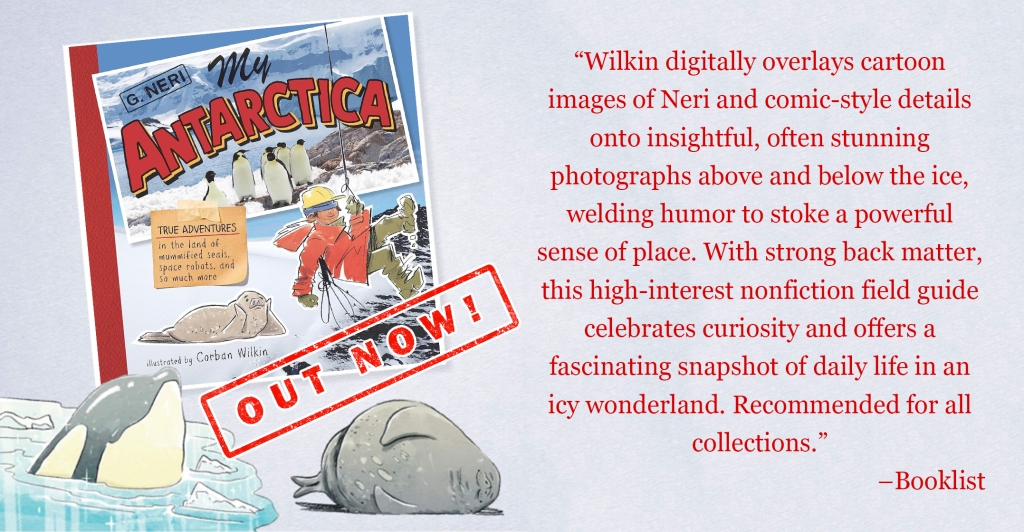
Filed under: comics, events, graphic novels, writing | Tags: art, books, cartoons, comics, drawing, graphic novels, illustration, writing
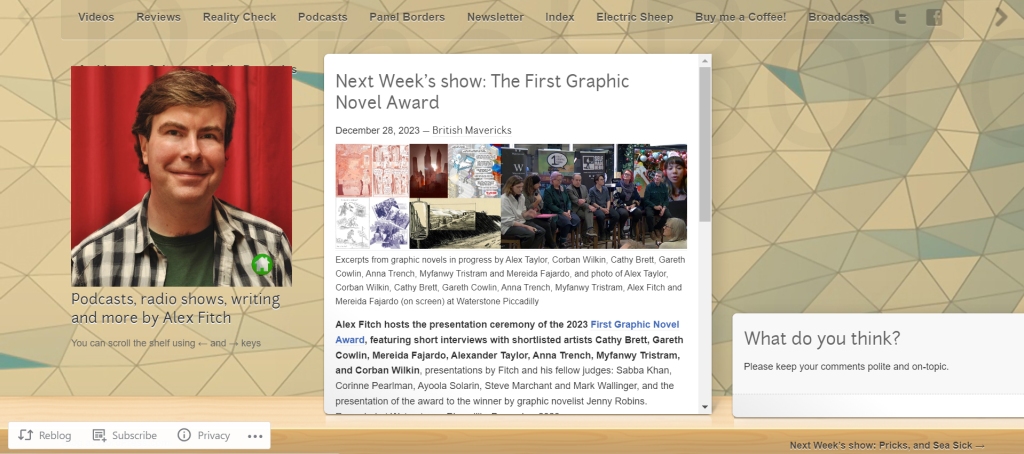
Filed under: illustration, my antarctica, picturebooks | Tags: art, books, cartoons, children's books, drawing, graphic novels, illustration, illustrations, picture book, picturebook, travel book, travel diary, travel journal
My Antarctica has just been chosen as one of Kirkus Reviews’ most anticipated books of 2024 and given its first review. Thanks!
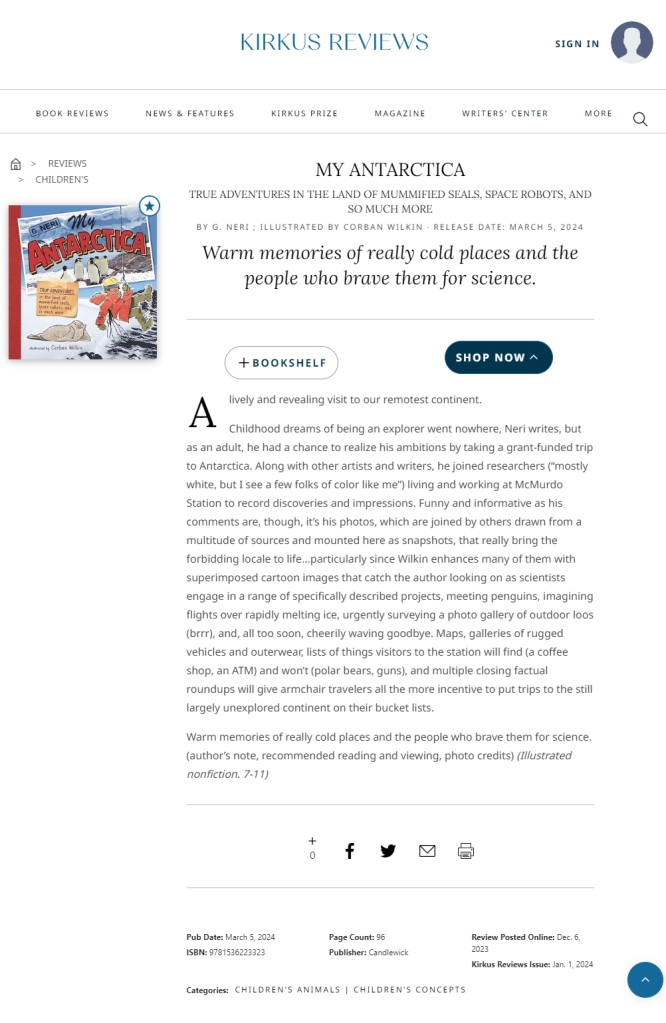
Filed under: dino detectives, my antarctica | Tags: antarctica, art, cartoons, children's books, documentary, graphic novels, illustration, picturebooks, science
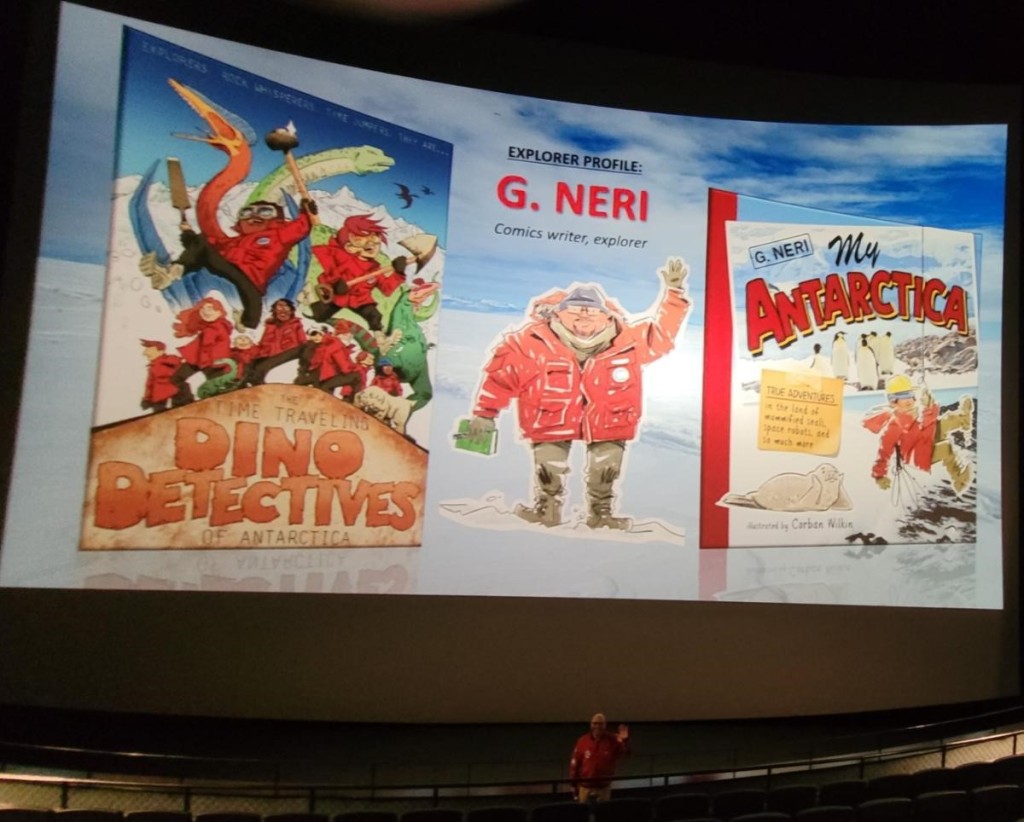
My Antarctica hardcover releases March 2024!
This is the first picturebook I’ve illustrated, and it’s actually a 100-page travel diary. So maybe not a picturebook at all. Or maybe a picturebook like no other.
The ever-wayfaring author of the book, G. Neri, got to see both of our Antarctica books up on the big giant screen ahead of the Houston Museum of Natural Science showing Dinosaurs of Antarctica, the sister documentary to our book Dino Detectives, in their Giant Screen Theatre.
Pre-order My Antarctica in the USA from Amazon, Target, or ThriftBooks.
Pre-orders in the UK currently only from Amazon, but watch this space.

Filed under: amy & kay, comic artists, comics, comics theory, drawing, drawing theory, faith in strangers, graphic novels, my comics | Tags: art, art theory, cartoons, comic strip, comics, drawing, graphic novel, graphic novels, how to draw, illustration, making comics, wab sabi, writing
“Nothing lasts, nothing is finished, and nothing is perfect.”
Comics has a spontaneity problem.
Chris ware said that, unlike writing prose or playing music, it isn’t really possible to get into a creative flow when making comics, that the technical demands are too complex and the rate of creation too slow.

The classic way of drawing comics is pretty convoluted. Script, thumbnails, roughs, underdrawing, inking. In fact, almost all comics were traditionally made by teams of three, four, five, or more people all doing their own separate bit to cobble it together.
But what really matters? I care about dialogue and relationships between characters more than anything. Do I care about comics having stunningly beautiful artwork? Well, yes, to an extent. But most of the time, artwork that is too involved, too complex and eye-catching, actually distracts the reader from the story. In a comic, the drawings should be in the service of the story, not in the service of themselves. So when we agonise over every panel, trying to make it a work of art in its own right, we may actually be doing more harm than good.

In trying to find a way to make art without being neurotic about it, I’m making myself work in ways that force me to embrace imperfection. The way I see it, however hard one tries, the result is bound to contain imperfections.
In fact, the acheivement of ‘perfection’ in art is asymptotic, i.e. you can approach it, but never reach it, and as you get closer, exponentially more energy is required to make further progress.
Or in other words: the first 90% requires 10% of the work, and the last 10% of the work requires 90% of the effort.

So maybe it’s better to embrace imperfections rather than engaging in the desperate struggle to overcome them all.
I’m starting to realise that the attempt to iron out all kinks in a piece of writing or drawing is mostly a barrier to progress.
Wabi-sabi is a concept originating from Japan that embraces the transience and necessary incompleteness of anything humans create. Starting from this idea leads one to principles of simplicity and finding natural approaches to creation.

I’m having a go at drawing comics with the most natural approach that I possibly can. Two projects I’m currently working on, my graphic novel Amy & Kay and a daily comic strip Faith in Strangers, are both drawn in pencil without much planning or any underdrawing, and with the intent to embrace imperfection as far as I can bring myself to do so.
When things go right, drawing this way looks more spontaneous and interesting than any laboured-over drawing. When it goes wrong, it’s imperfect, but somehow hangs together with everything else, and balances with the parts that are more successful or complete.
Make the unfinished and imperfect nature of the work part of its essence, like a painting with areas of blank canvas, or a song that cuts off in the middle of the climactic moment.
Filed under: comics, drawing, faith in strangers, graphic novels, illustration, my comics, sketchbook | Tags: art, cartoons, comic, comics, graphic novel, graphic novels, illustration, science fiction, sketchbook

On Monday 25th April, I’m starting a serial graphic novel.
Every day, I’ll be posting a new episode on my Instagram and my Twitter.
FAITH IN STRANGERS is a serial graphic novel made up of short scenes from a space base in the remotest regions of the solar system, where three entry-level astronauts are stuck together having strange conversations, getting ignored by mission control, and trying not to be driven mad by jealousy and social isolation.
It’s kind of science fiction, but not really. It’s more like a drama that just happens to be set on an icy dwarf planet in the trans-Neptunian outer reaches of the solar system.
Imagine being stuck somewhere so remote that there’s a 24-hour delay to communicate with anyone back on Earth. Now imagine being stuck there with two of your co-workers. Well now they’re your best friends, and your closest family, and the people you rely upon for your continued existence each and every day. So let’s hope you get along.
This is an experiment in drawing an ongoing comic and sharing the results online every day. I’ve never done this before. Let’s see what happens.

Filed under: amy & kay, comics, drawing, graphic novels, illustration, illustrations, my comics, writing | Tags: art, books, cartoons, comics, graphic novels, illustration, sketch
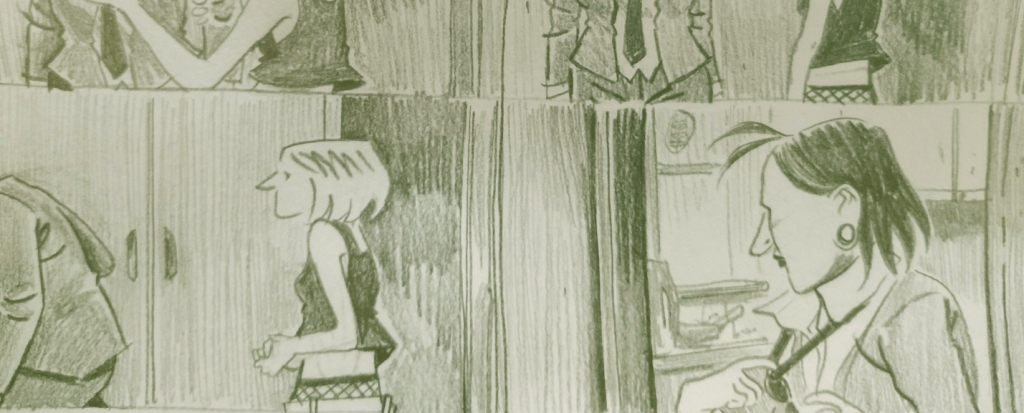
The great cartoonist Seth subtitled his brilliant Wimbledon Green with the words, “A story from the sketchbook of the cartoonist Seth.”
Wanting an excuse to make some fun comics just for himself, he decided to put aside a bit of time each morning to draw a little comic in his sketchbook. Without planning ahead, he drew what came most naturally to him, and gradually a story emerged, eventually ending up as the complete book.
I’m working on something with a similar approach: a graphic novel called Amy & Kay.
Every page of this comic is drawn without any under-drawing. It’s just me and a pencil, drawing it as I go along.
Working this way permits a lot of spontaneity to come out in the drawings. The standard way of drawing comics, and the way I’ve usually done it (as detailed in my last post), is to create a careful underdrawing and then ink over the top of it. This is a tried-and-true method that’s served people well for countless great comics, but the results can look a little overwrought, and lacking in the focus and emotional immediacy that a spontaneous drawing can give to a character’s expression and gesture.
When I noticed that a lot of my sketchbook drawings and doodles were stronger than my more careful illustrations, I knew I had to find a way to make my comics more like my sketches.
I’m quite deep into this book, and I’m starting to see the result: a story in pictures where the drawings may not be technically perfect, but where the immediacy of the drawing hangs together in a natural way and seems to give more life and character to the story than I’ve managed to acheive before.
More info on the book coming soon! Until then, here’s a few snapshots from the drawing board in the last few weeks.
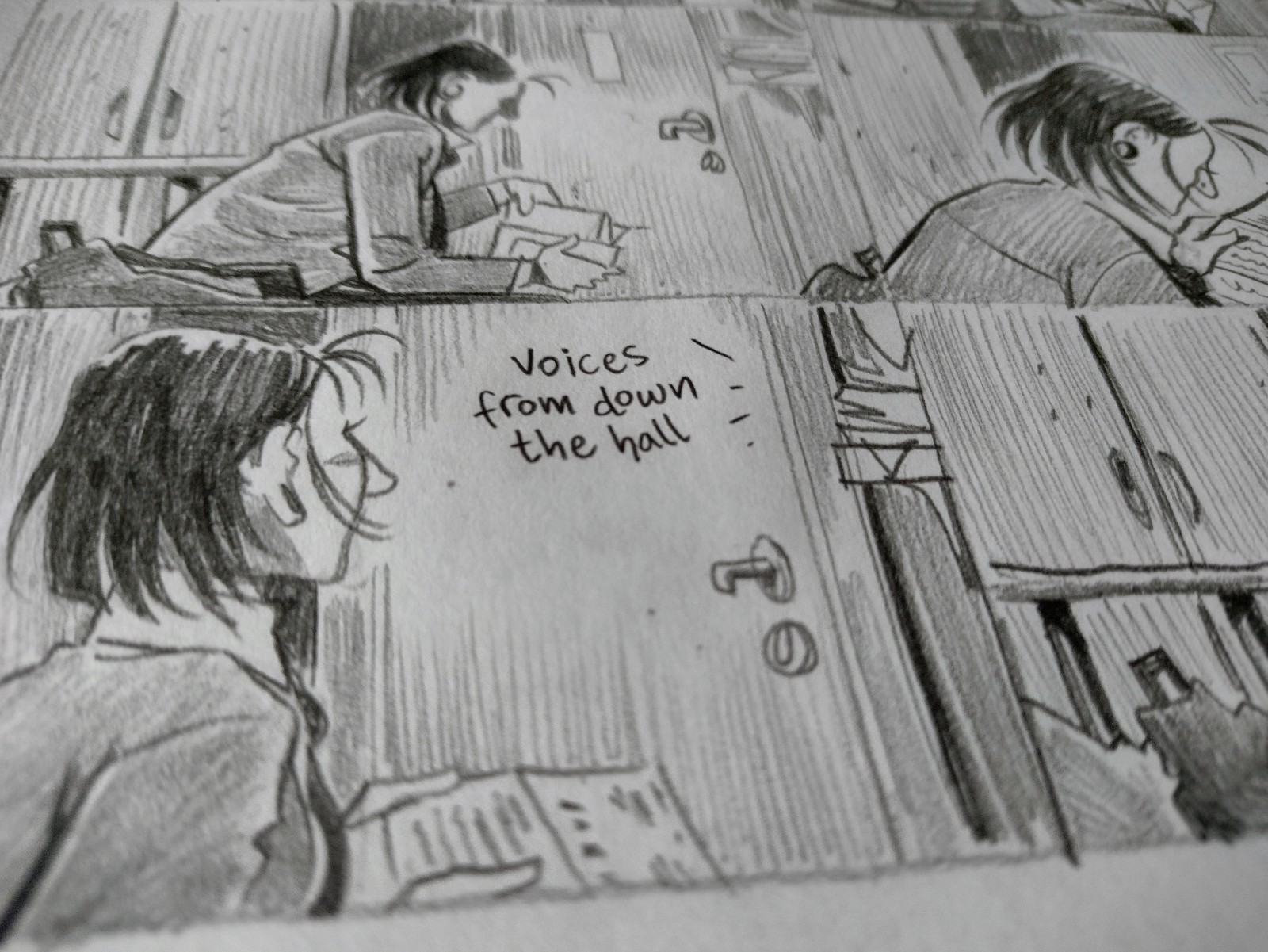



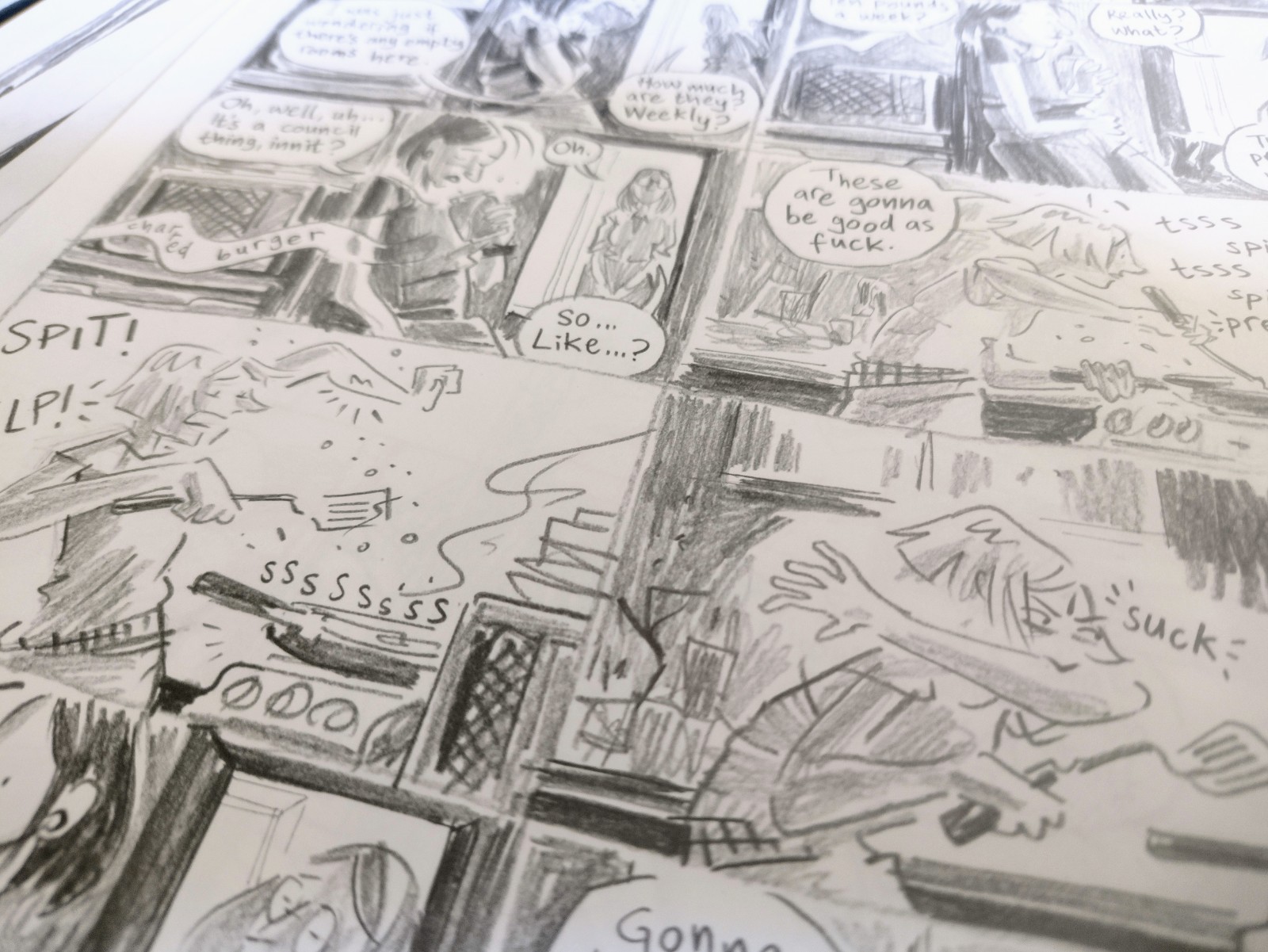
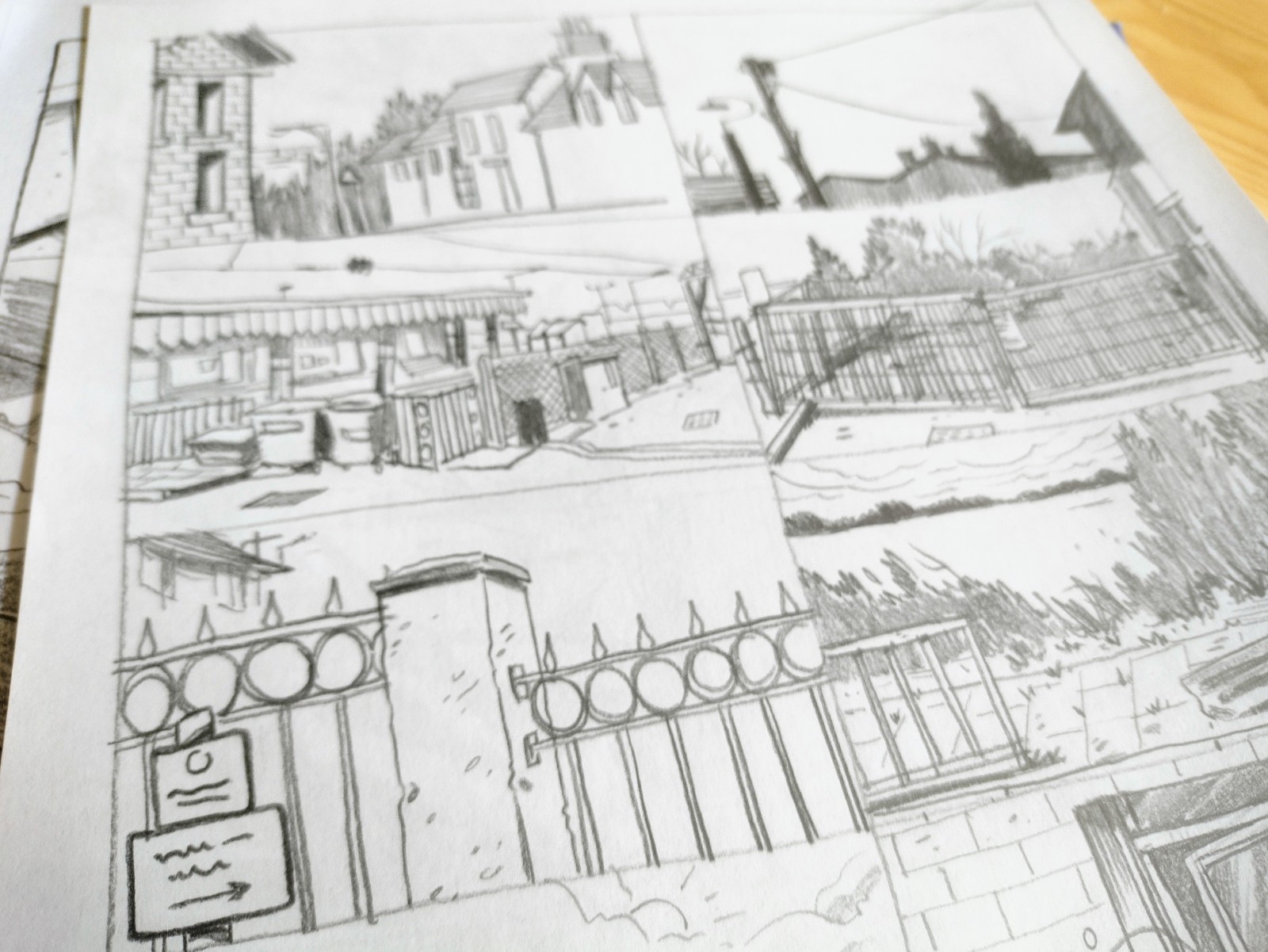

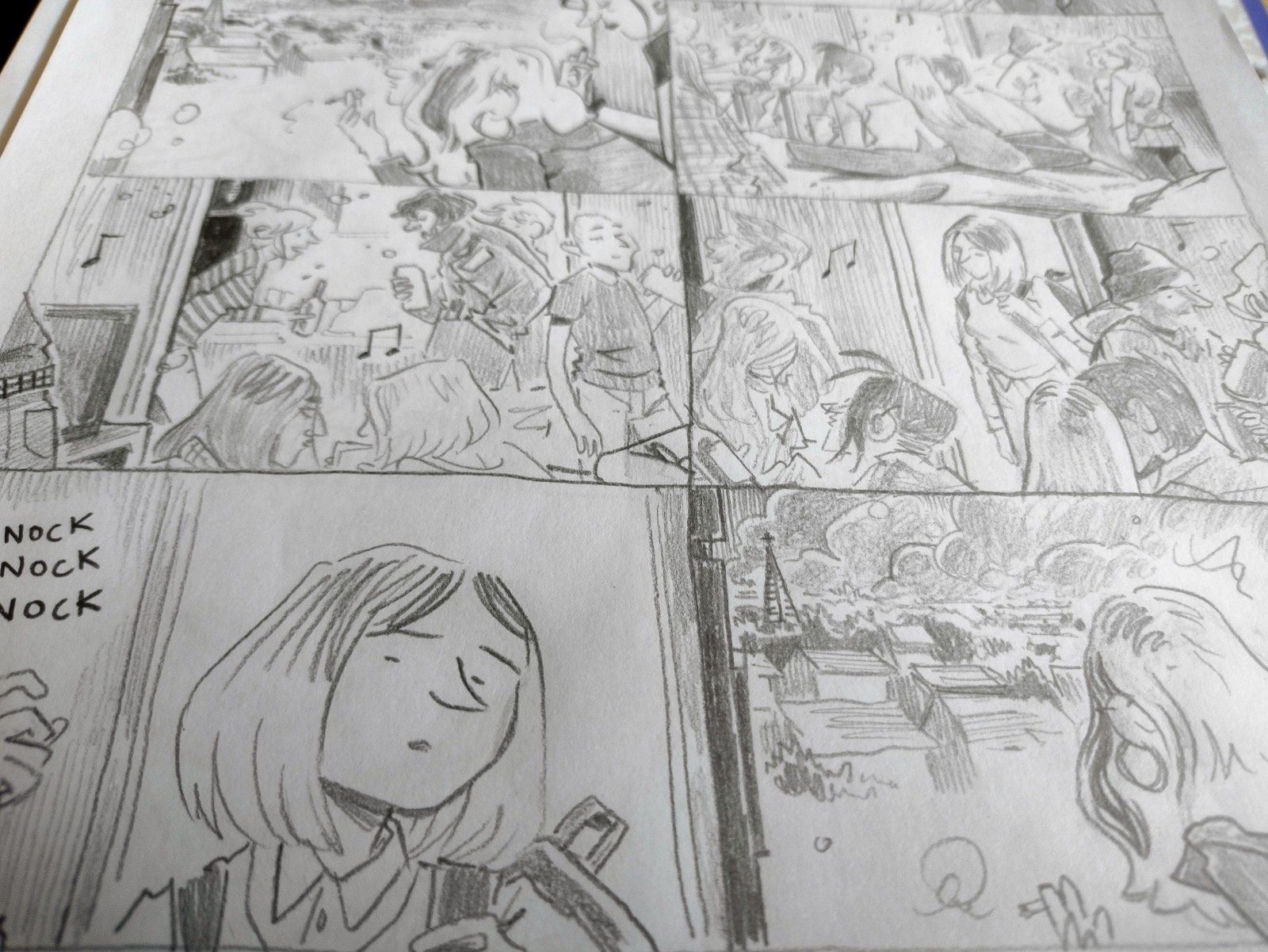
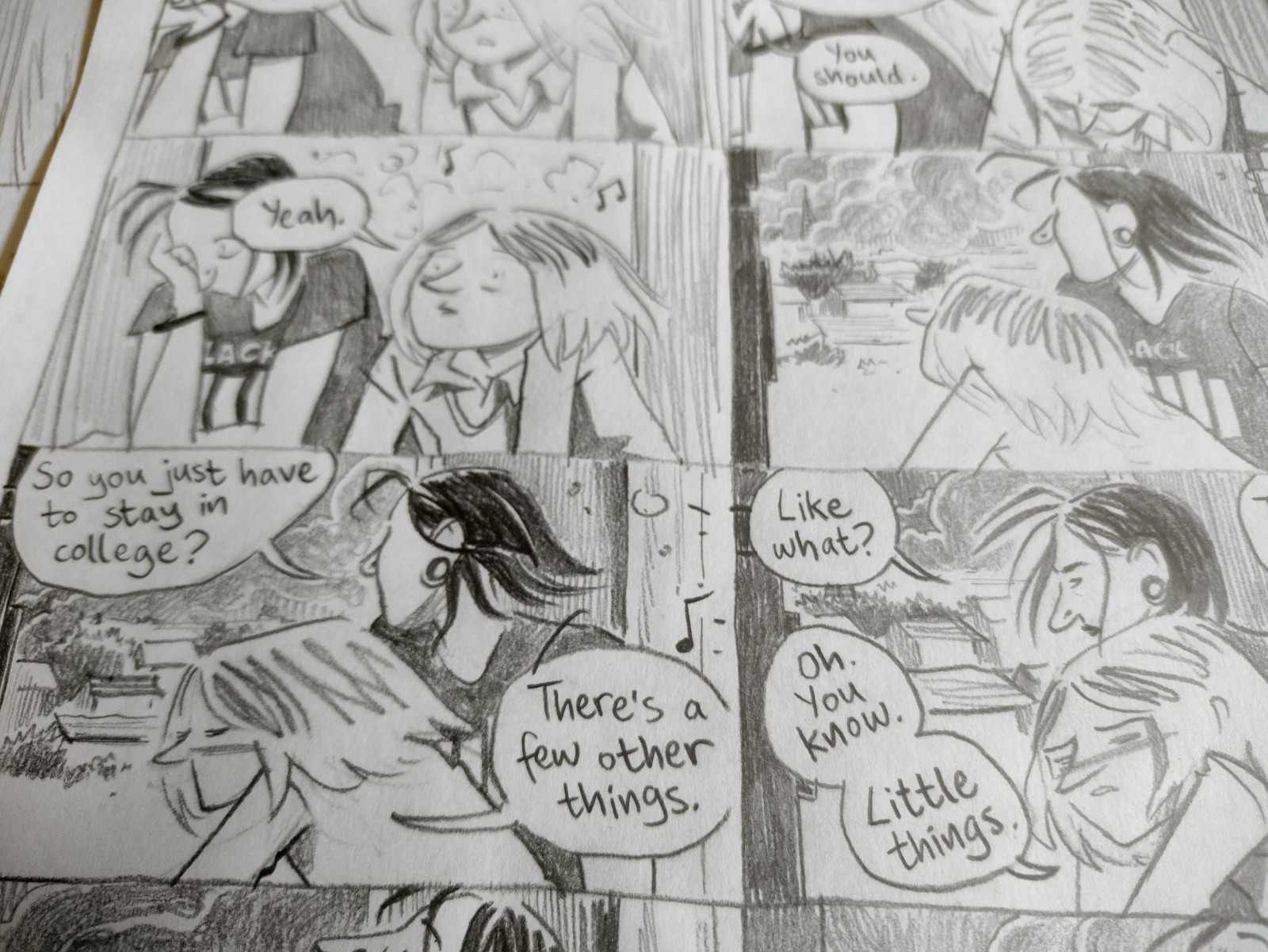
Filed under: illustrations | Tags: art, cartoons, children's books, comics, graphic novels, illustration, science

When I was giving school talks about Dino Detectives I spoke a bit about the process of going from script to full-colour artwork when making a page of comics. I thought I’d share here the examples that I used from the book, going from a script, to thumbnails, to scrappy roughs, to blue-line underdrawing, to the final line drawing. Then the process of layering the colour on, from background, to characters, then adding details, then shadows, and finally a few special lighting effects.











Filed under: illustrations, politics | Tags: art, cartoons, clinton, cruz, election, illustration, politics, sanders, trump

Just created this set of designs in the style of face cards from a deck of playing cards for T.J. Kirkpatrick‘s upcoming Primary Colors project.
T.J.’s photographed beautiful portraits of such significant political figures as Newt Gingrich and Christine Lagarde, but in this project he focuses on ordinary voters and the reasons they had for rallying behind their candidate, be it Clinton, Cruz, Sanders, or Trump, the eventual leaders in these races which, of course, has now been whittled down to just the big two.
But I don’t know, the way Gary Johnson’s polling right now, I may have to make a bonus card for him as the joker in the pack. Or maybe that card you get with the rules of poker on it.

Filed under: comics, comics theory, graphic novels, illustrations, my comics | Tags: art, books, cartoons, children's books, climate change, comics, graphic novels, illustration, science, writing

I’ve been in the habit, for a long time, of drawing TOO SMALL! So right now, working on the Low Carbon Future graphic novel project with Leeds University, I’m drawing these pages at the largest scale I’ve ever done for a comic, and I have to say, it’s very refreshing.
These pages I’m doing are to be printed around A4 size (210x297mm), which is large, so I’m drawing them at something like 500x720mm, not far off A2, which is gargantuan. I think people used to draw comics on paper that large, to be printed on big full newspaper pages, and they scanned them with those massive old drum scanners you don’t see anymore.
Admittedly, I am making this easier for myself by using the ‘french graphic album method’ of drawing two half-pages and then printing them together. It makes having the thing on your drawing board a lot less cumbersome. Anyway, more on this when it’s looking finished.
